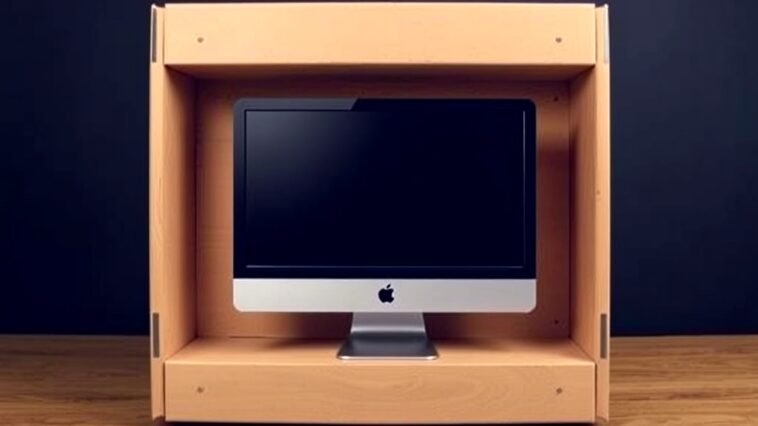Moving can be a daunting task, especially when it comes to delicate items like computer monitors. These devices are essential in our daily lives, whether for work or entertainment, and packing them properly is crucial to avoid damage during transport. In this article, we will explore the best practices on how to pack a computer monitor for moving, ensuring that it arrives at your new location safely and securely.
Understanding the Importance of Proper Packing
Before diving into the specifics of packing a computer monitor, it’s important to understand why proper packing is essential. Monitors are sensitive electronic devices with fragile screens that can easily crack or break if not handled correctly. By taking the time to pack your monitor properly, you can:
- Prevent Breakage: Protect the screen and internal components from damage.
- Avoid Scratches: Keep the surface free from scuffs and marks.
- Facilitate Setup: Make unpacking and reassembling easier at your new location.
Gathering the Right Materials
The first step in how to pack a computer monitor for moving is to gather all necessary packing materials. Here’s a checklist of what you will need:
Essential Packing Materials
- Original Box (if available): If you still have the original packaging, use it. It’s designed to protect the monitor during transport.
- Bubble Wrap: Provides cushioning and protects against shocks.
- Packing Tape: Essential for securing boxes and wrapping materials.
- Foam or Soft Cloth: For additional padding around the monitor.
- Marker: For labeling boxes clearly.
- Plastic Bags: For storing cables and smaller accessories.
Step-by-Step Guide to Packing Your Monitor
Step 1: Prepare Your Monitor
Before starting the packing process, ensure that your monitor is turned off and unplugged. Disconnect all cables, including power cables and any peripherals. Here’s how to prepare your monitor:
- Remove Cables and Accessories: Carefully detach all cables, including HDMI, DisplayPort, and power connections. Keep them organized and consider using twist ties or rubber bands to prevent tangling.
- Clean the Screen: Use a microfiber cloth to clean the monitor’s screen. This helps avoid scratches during the move.
- Check for Loose Parts: Ensure that there are no loose parts on the monitor stand or base. If your monitor has removable parts, take them off.
Step 2: Cushioning the Monitor
Once your monitor is prepared, it’s time to provide it with cushioning. This step is vital for absorbing shocks during transport:
- Wrap the Monitor: Begin by wrapping the monitor in bubble wrap. Start from the screen and wrap it entirely, ensuring that there’s a thick layer of bubble wrap on all sides. Secure the bubble wrap with packing tape.
- Use Foam Padding: If you have foam padding or soft cloth, place it around the edges and back of the monitor for additional protection.
Step 3: Packing the Monitor
Now that the monitor is well-cushioned, it’s time to pack it into a box. If you have the original box, this step is straightforward:
- Using the Original Box: Place the wrapped monitor into the original box, ensuring that it fits snugly. Fill any remaining space with packing peanuts or crumpled paper to prevent movement.
- Using a Different Box: If you don’t have the original box, choose a sturdy box that is slightly larger than the monitor. Place a layer of packing peanuts at the bottom, then place the wrapped monitor inside. Fill any gaps with more packing peanuts or crumpled paper.
Step 4: Labeling the Box
Proper labeling is essential for an organized move. Clearly label the box containing your monitor with “FRAGILE” and “THIS SIDE UP.” This information will inform movers to handle the box with care.
Step 5: Packing Cables and Accessories
Don’t forget about the cables and accessories! Here’s how to pack them properly:
- Use Plastic Bags: Place all cables, the power adapter, and any other accessories in a plastic bag. Seal the bag securely.
- Label the Bag: Write down what’s inside the bag (e.g., “Monitor Cables”) and tape it to the top of the monitor box or place it inside the box.
Final Preparations for Moving Day
Step 6: Loading the Monitor
On moving day, loading the monitor requires special attention:
- Choose the Right Spot: Load the monitor box last so it’s the first item unloaded. This minimizes the risk of other boxes or items shifting and damaging the monitor.
- Secure the Box: Ensure that the box is secured in the moving vehicle. Use straps if necessary to prevent it from sliding during transit.
Unpacking Your Monitor
Once you reach your new location, it’s time to unpack your monitor. Follow these steps:
Step 7: Unpacking the Monitor
- Select a Safe Area: Choose a clean, flat surface to unpack the monitor.
- Remove the Box and Wrap: Carefully open the box and unwrap the bubble wrap, taking care not to apply pressure to the screen.
- Inspect the Monitor: Check for any signs of damage. If everything looks good, proceed to set it up.
Step 8: Reconnecting Cables
Reconnect the monitor by following these steps:
- Position the Monitor: Place the monitor on your desk or chosen location.
- Connect Cables: Attach the power cable and any other necessary cables (HDMI, DisplayPort, etc.).
- Turn On the Monitor: Power up the monitor and ensure it’s functioning correctly.
Tips for Moving Multiple Monitors
If you have multiple monitors to move, consider the following tips to streamline the process:
- Pack Each Monitor Separately: Just like with a single monitor, each monitor should have its own packing materials to prevent damage.
- Create an Inventory List: Keep track of each monitor and its accessories. This will save time during setup.
- Consider Professional Help: If you have several monitors or expensive equipment, consider hiring professional movers who specialize in electronics.
Conclusion
Knowing how to pack a computer monitor for moving is critical for ensuring its safety during transit. By following these detailed steps, you can minimize the risk of damage and make your moving experience more efficient. Always remember to use the right materials, provide ample cushioning, and label your boxes clearly. With proper preparation, you can arrive at your new home with your monitor intact and ready to use.## Top 10 FAQs About Packing Computer Monitors for Moving
1. How do I prepare my computer monitor for packing?
Start by turning off the monitor and unplugging all cables. Remove any attached peripherals, such as speakers or webcams. Clean the screen with a microfiber cloth to remove dust and fingerprints.
2. Should I use the original box for packing my monitor?
If you still have the original packaging, it’s the best option as it’s designed to fit perfectly. If not, use a sturdy box that provides adequate cushioning.
3. What materials do I need to pack a monitor?
Gather bubble wrap or foam padding, packing tape, a sturdy box, and a microfiber cloth. You may also want to use corner protectors for added safety.
4. How do I wrap the monitor securely?
Wrap the monitor in bubble wrap, ensuring the screen is well protected. Use several layers for added cushioning, and secure the wrap with packing tape.
5. How do I pack the monitor into the box?
Place the wrapped monitor in the box upright, not flat. Fill any empty spaces with packing peanuts or crumpled paper to prevent movement during transport.
6. Can I stack other items on top of the monitor box?
Avoid stacking heavy items on top of the monitor box. It can cause damage to the screen. Keep the box in a safe, upright position.
7. How should I label the box?
Clearly label the box as “Fragile” and indicate which side is the top. Use bold letters and consider adding a “This Side Up” label.
8. Is it safe to move the monitor in a vehicle?
Yes, but ensure the monitor is secured and cannot slide or tip over during transport. Place it on a flat surface and avoid direct sunlight or extreme temperatures.
9. What if I don’t have bubble wrap?
If bubble wrap isn’t available, use blankets, towels, or clothing to provide cushioning. Ensure the screen is well-protected by wrapping it securely with these materials.
10. Should I insure my monitor during a move?
If your monitor is valuable, consider insuring it. Check with your moving company for options, or look into separate insurance for high-value electronics.




